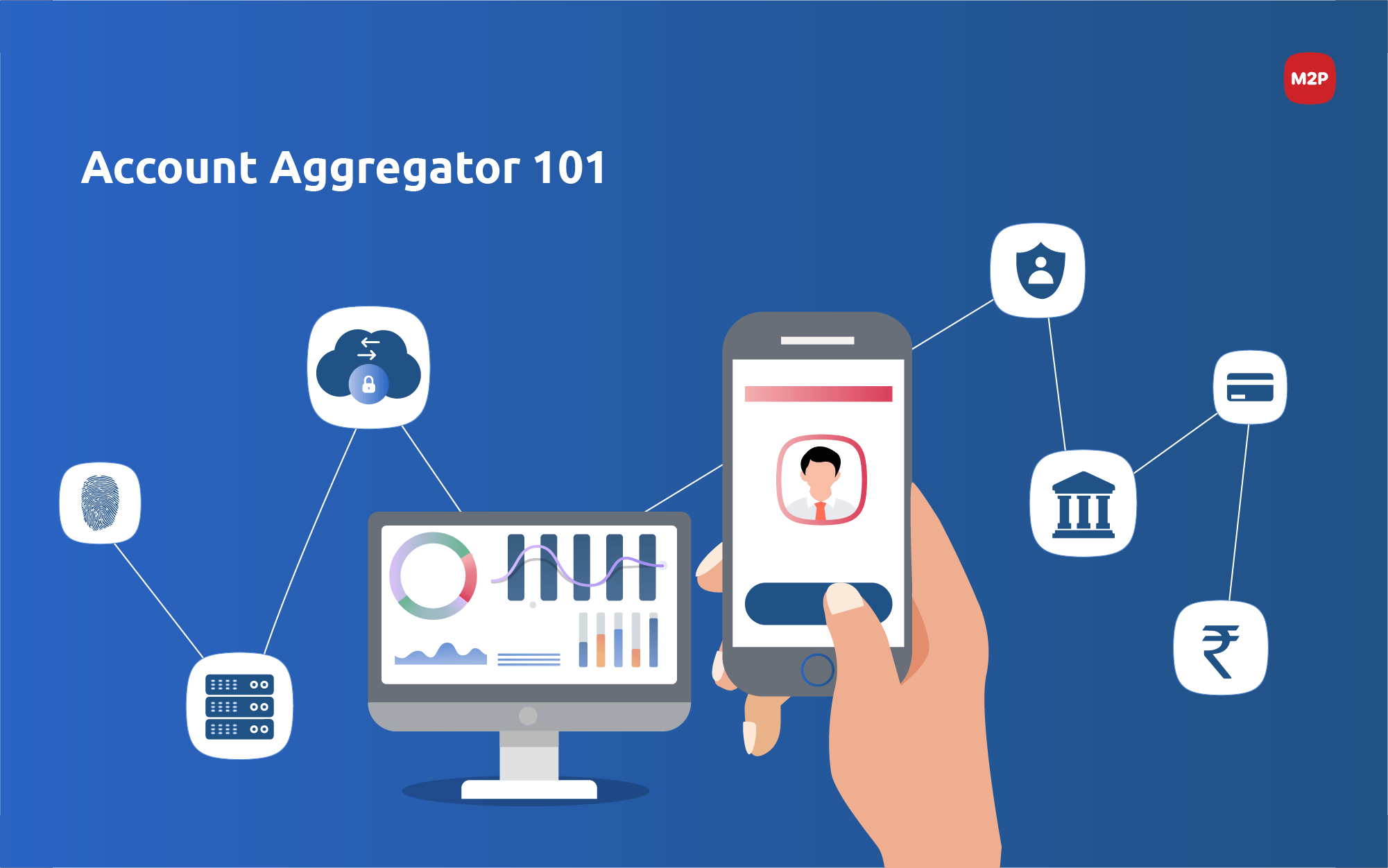
Data is a gold mine that drives insights and efficiencies across industries. Gartner predicts that by 2023, companies that actively leverage shared data will outperform their peers in crucial metrics. With 180+ zettabytes of data estimated to be created by 2025, businesses across industries need to devise strategies to gain access to relevant consumer information. Such access will drive insight-driven decisions to boost revenue, mitigate risks, and reduce costs.
Consent-based digital access to data
Account aggregators or financial data aggregators play a significant role in enabling data access to financial institutions, businesses, and individuals. Prioritizing fiduciary consumer relationships, account aggregators share digitally signed and encrypted data upon explicit consumer consent.
Financial data aggregation in India
India launched its Account Aggregator (AA) network in September 2021, as the first step towards open banking. Built on the Data Empowerment and Protection Architecture (DEPA), the account aggregator framework is the world’s leading consensual data-sharing infrastructure.
This digital data access structure serves as a substantial digital enablement initiative after the launch of public infrastructure for digital identification (Aadhaar) and digital payments (UPI). Millions of customers can now digitally access and share their financial data in a compliant manner.
Potential to transform efficiencies
The AA framework holds the potential to transform the efficiencies and profitability of financial institutions and businesses in India. Banks, fintechs, and NBFCs can use consumer data to widen target-base, personalize services, lower risks, enhance customer experience, and future-proof their product portfolio. Collecting, cleansing, and synthesizing pertinent data helps enhance insight-driven decisions and executions.
Democratization of data access via account aggregator networks has brought in a win-win scenario for businesses, consumers, and new-age digital lenders with advanced underwriting algorithms and a larger risk appetite. They have broken the data monopoly of digital and financial services firms by transferring data sharing power to individuals.
So, who are account aggregators in India?
Account aggregators are NBFC-AA licensed entities that are regulated by the RBI. Contrary to the name, they cannot ‘aggregate’ data. They only enable consensual data sharing and access between consumers and financial institutions in the network. Account aggregators cannot read or resell data. They can carry data from one financial institution to another based on individual consent and direction. Consumers also have the choice to revoke data already shared.
How account aggregation happens?
Data gathering, collation, and dissemination are enabled through open Application Programming Interface (API) connections.
Do account aggregators benefit individuals?
The answer is yes.
Account aggregators help consumers get rid of laborious paperwork, effort, and security issues involved in notarizing, stamping, signing and scanning physical copies of bank statements. Users need not have to expose themselves to vulnerabilities of sharing login credentials and financial history to a third party.
With mobile-based digital data access and sharing process, account aggregators eliminate the conventional hassles of data access and sharing. People across demographics will get access to experiential, preference-based financial services and products. While the affluent will experience value through customized investment and insurance options, the popular masses will enjoy greater inclusiveness through friction-free access to formal credit.
Participants in the AA network
While individuals and small businesses form the epicentre, the AA network comprises the three participants listed below.
1. Financial Information Providers (FIP) — Data sources like banks, tax platforms & insurance providers.
2. Financial Information Users (FIU) — Data recipients such as banks, NBFCs, and fintech firms.
3. Account Aggregators (AA) — RBI-regulated entities that facilitate real-time data sharing.

Banks in the AA network
The top eight banks (listed below) that cater to over 300 million consumers have joined the AA network.
1. Axis Bank
2. ICICI Bank
3. IndusInd Bank
4. HDFC Bank
5. Kotak Mahindra Bank
6. IDFC First Bank
7. Federal Bank
8. State Bank of India
What kind of data does AAs share? How are they different from Aadhar eKYC, credit bureau, and CKYC?
Central Know Your Customer (CKYC) registry and paperless Aadhar Electronic Know Your Customer (EKYC) capture identity verification and only shares data such as name, address, and gender. And credit bureaus reveal only the credit score, loan, and repayment history of consumers.
On the other hand, account aggregators facilitate transaction data sharing from savings, deposits, or current accounts. They share data pertaining to consumer bank transactions, tax, pension, securities, insurance, and much more.
Is data sharing via AA network secure?
Data shared on the account aggregator network is completely secure. It is encrypted by the sender and can be decrypted only by the intended recipient. End-to-end encryptions and digital signatures remove vulnerabilities and secure the process.
What if consumers choose not to share data?
By all means, a consumer can choose not to share any data. Joining the AA network or registering for data sharing is completely voluntary. They can link the account of their choice, enable or revoke data access at any point in time.
Use cases for account aggregator network
Here are use cases in which account aggregators can drive efficiencies and add value to consumers and financial institutions.
Personal finance management — Consumers can analyze personal spends across accounts, which will help generate recommendations to streamline expenditure. This process will enable better personal finance goals and budgetary adherence for consumers.
Cashflow-based lending — Consuming data from FIPs, FIUs can get better visibility into the cash flow of applicants. Cashflow-based lending will accelerate mainstream lending, especially in SME and MSME credit space.
Alternate data for credit assessment — Evaluating a consumer’s creditworthiness is a true challenge if there is inadequate data on his income or payment history. If credit applicants who do not have formal credit access could share their telecom bill payment to the lender, this will generate an alternate data set to assess creditworthiness.
Loan monitoring for predictive default analysis — Every lender will want visibility into the borrower’s financial behavior to ensure discipline in repayments. The income and outflow from a person’s bank account could reveal his financial behavior. And this could help lenders predict default patterns.
Selling customized financial products — Accessing data concerning consumer behavior with financial products will help financial institutions involved in wealth management and insurance customize their products.
Wealth management — Imagine a customer has invested in insurance from A, mutual fund from B, Gold deposits from C, and savings account from D. An account aggregator can unify all this data and help wealth managers handle customers’ portfolios more efficiently.
Accounts reconciliation for small businesses — With account aggregators, SMEs and MSMEs would not require to manually feed in Tally/ QuickBooks for their daily invoices. They can simply consent to platforms to consume data from FIPs and derisk manual errors.
Unified nomination register — Nominations in financial products today are decentralized, hence have to be managed individually. A joint collaboration between the account aggregator and the unified nomination register can solve this.
Now, these are not all. We have just scratched the surface of the use cases that account aggregators could have. When more pipelines get enabled on AA network, the use cases will grow exponentially. Then they will have to address concerns surrounding platform stability, data privacy, and grievance redressal mechanisms.
M2P believes in democratizing credit by empowering lenders with alternate data/ surrogate channels. Should you be looking for a partner who could help you look beyond conventional credit applicants’ data, write to us at business@m2pfintech.com
Subscribe to our newsletter and get the latest fintech news, views, and insights, directly to your inbox.
Follow us on LinkedIn and Twitter for insightful fintech tales curated for curious minds like you.




0 Comments